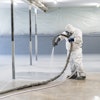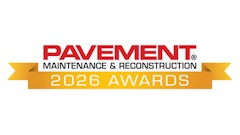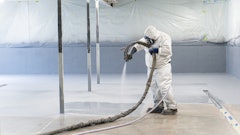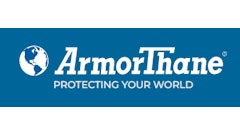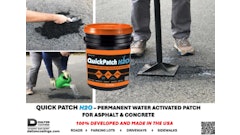Green seems to be the buzzword of the times, and many industries and businesses trying to take advantage of this attention to all things recyclable and sustainable (a newer and clunkier buzzword) are jump-starting efforts to become more environmentally friendly.
But from release agents developed to replace diesel to long-lasting waterborne traffic marking paint, this "black" industry has been going green for a long time. Pavement maintenance efforts from sealcoating and cracksealing to infrared repair and hot box recycling are used to extend the life of asphalt pavement (that just might include a percentage of recycled asphalt) that has used up raw materials and that would if torn up be dumped in a landfill. Then more aggregate and asphalt would be used up to construct more pavement in its place.
But all that green effort pales next to pavement sweeping, which by its very nature is not just green but Forest Green (for those who recall their old Crayola? crayons). Part of the reason sweeping exists - whether done by hand with a broom on a driveway or by a contractor with a truck on streets and parking lots - is to clean up the environment. Removing trash and other debris is the most visible benefit, but regular sweeping not only helps a property look better it actually reduces pollutants on the pavement. As a recent Seattle study demonstrates, regular sweeping picks up particulates that have attached to them or absorbed into them various metals, oils, and other chemicals that would eventually pollute bodies of water. That's why sweeping has been determined to be a BMP (best management practice) to resolving stormwater runoff issues, and a cost-effective BMP at that. As the study (see "Impact Sweeping,") points out, it's a lot less expensive to sweep streets regularly than it is to build and operate a water treatment facility.
This result should help sweepers retain clients, maintain sweep frequencies, and maybe even convince those who have never hired sweepers to start. Sweeping makes a property look better, makes it more inviting to potential renters whether commercial or residential, makes it look more appealing to customers, and perhaps most importantly provides an environmental service to the community. There's nothing greener than a business that does that.


